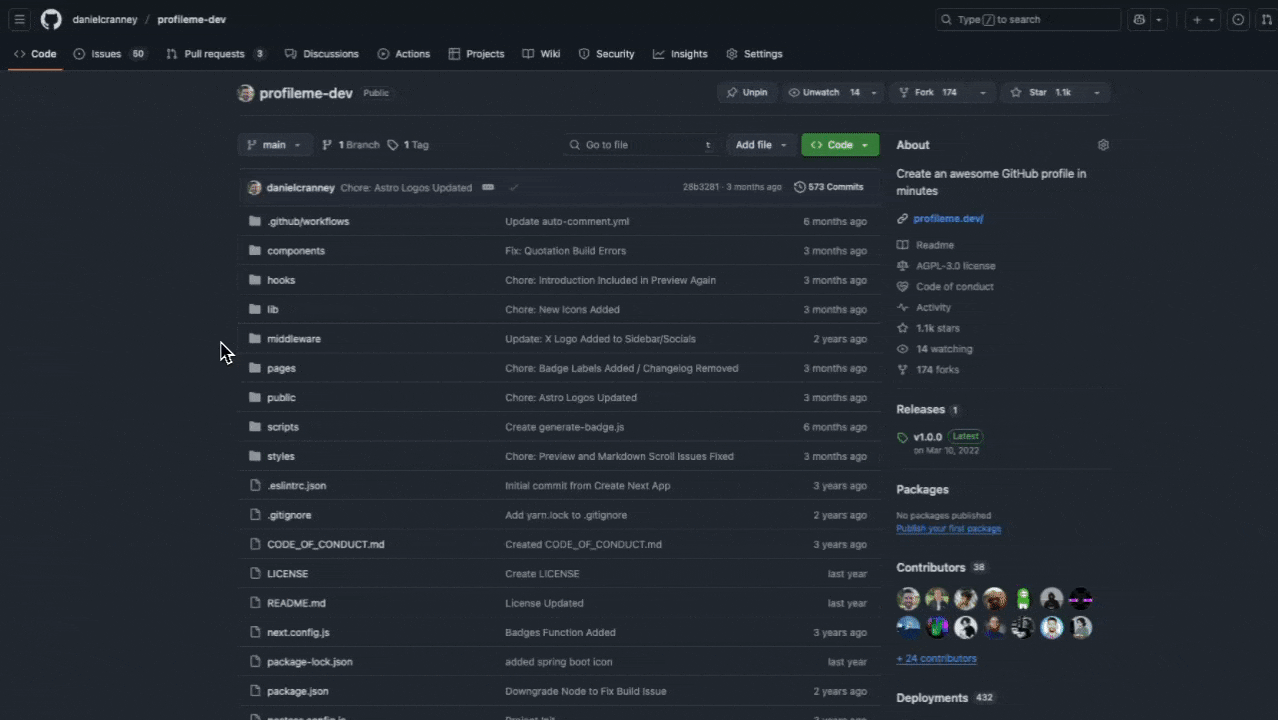Developers just love shortcuts.
Whether it’s quickly navigating your favourite IDE, switching between tabs in a browser or saving time and clicks with a CLI command, we all love finding ways of shaving seconds off of repetitive tasks.
Despite many of us spending a good portion of our working lives on GitHub, not many developers know about some of these handy time-savers that are hidden in plain sight.
Here are some tricks, tips and time-savers that’ll make you move through GitHub like it’s your own personal IDE.
Open in VSCode for the Web

Reading code is a great way to learn concepts, approaches or methods that you can use in your own coding practice. Let’s imagine you’re browsing a repo, and spot something you’d like to explore and play around with.
GitHub has found a way to make this a frictionless experience. Just press the . key, and the whole thing reloads as a lightweight, web-based version of VSCode, at github.dev.
You can browse files, tweak code, and even make commits straight from your browser, getting a great developer experience, without leaving the browser.
If you’d prefer to use a community-built version of the online VSCode editor, just change any repo URL from github.com to github1s.com, and get going.
Slick and simple, and built by the community.
Press , — Open the repo in a full Codespaces environment
If the . shortcut is a quick peek under the hood, , is the full engine.
Pressing the comma key launches the repo inside GitHub Codespaces.
If the previous command wasn’t enough for you, this one gives a complete dev environment with terminal access, extensions, and everything you’d expect from local VSCode. It’s perfect for testing something on the fly or working on a machine that’s not set up for development.
Read the Raw Diff

Everyone has their preferences when it comes to UIs. To some, they’re the vehicle that delivers the content, using design elements to make the content easier to digest.
For others (probably developers who spend most of their time on the command line), they’re unnecessary, and get in the way.
If you’re in the second group, you’re going to love this handy way to see diffs without the fancy UI.
To get a raw, text-based version of the diff, add .diff or .patch to the end of any pull request or commit URL to get a raw text-based view of the changes.
It’s a quick way to share or inspect diffs, especially if you’re reviewing code in a terminal or over a slow connection. Simple, old-school, and handy to know.
Go To…
Developers are magpies for keyboard shortcuts, picking up new ones all the time and (somehow) remembering them all, meaning some barely touch their mouse while working.
Well, you can move around GitHub in the same way, using logical shortcuts to move between different sub-sections of a given repo.
Press G followed by another key to jump between sections:
G I takes you to Issues, G P to Pull Requests, G C to the Code tab, and G D goes back to your dashboard.
It’s smooth, it’s quick, and once you get used to it, clicking around the interface suddenly feels like a relic of the past.
Create a Permalink to a Specific File Version
Ever shared a GitHub link that inexplicably broke a week later? This one’s for you.
While viewing a file, press y.
Nothing happens, right? Wrong.
GitHub will quietly swap out the branch name in the URL for the exact commit hash, locking that view to a specific version in time. Perfect for documentation, blog posts, or code reviews where you need the link to stay valid forever.
If you highlight a few lines before pressing y, the URL even keeps those line references intact. It’s one of those tiny details that it’s so easy to overlook, but really enhances the developer experience once you know it’s there.
See Every Shortcut

…And finally, the meta shortcut.
Press ? anywhere on GitHub to open a panel that lists every available shortcut for that page, whether you’re in a repo, PR, issue, or your dashboard. It’s the fastest way to discover even more handy shortcuts like these, and be sure to check out GitHub’s full shortcut list here for them all.
Seconds Saved
None of these shortcuts will change your life, but each one saves a few seconds, and the time saved soon adds up.
So, next time you’re on GitHub, try a few of these out and let us know if you find any other hidden gems!
